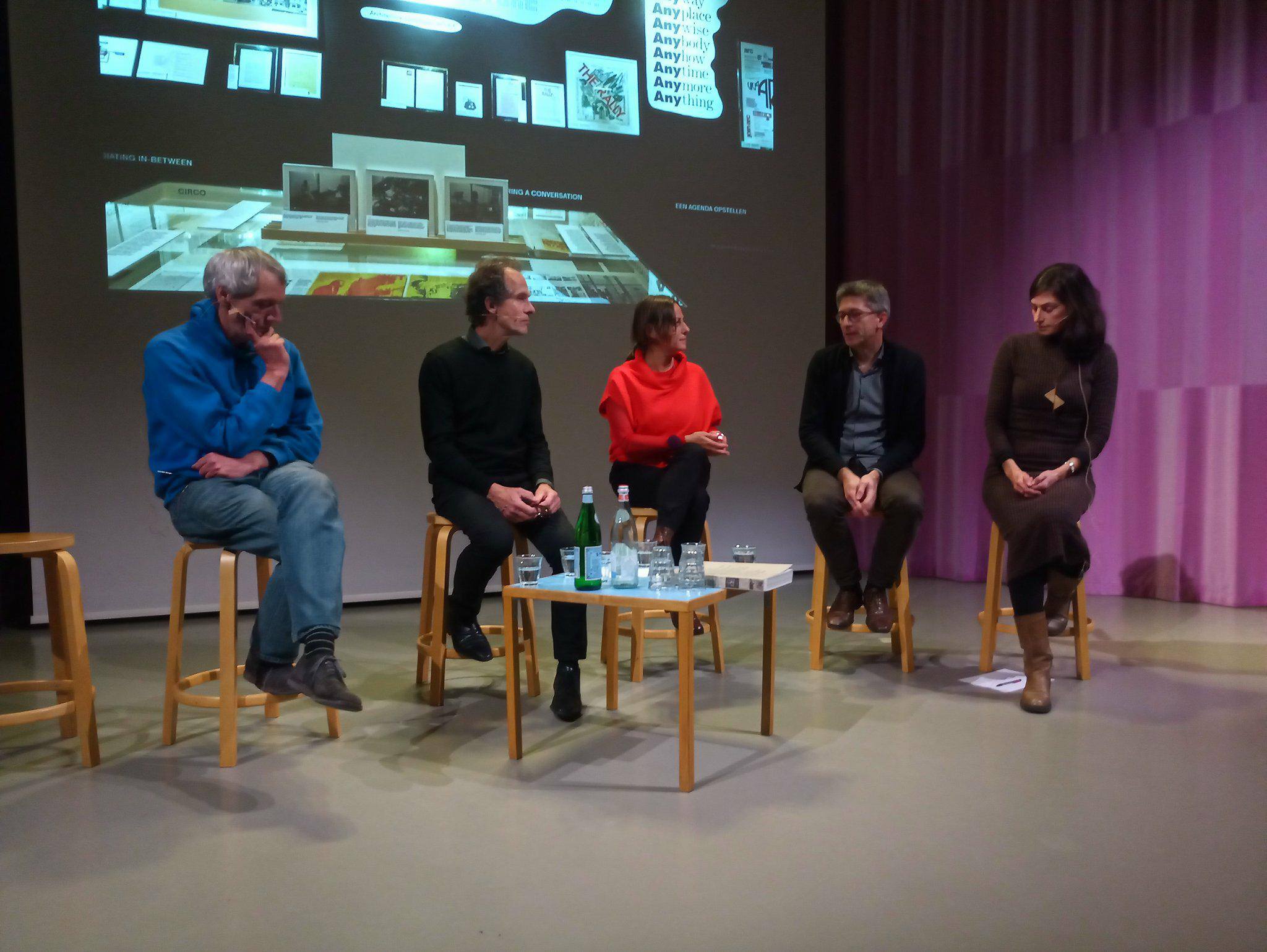The Other Architect with Archis/Volume: Early Reflections
On Thursday November 9th, a debate on alternative practices of architects was on at Het Nieuwe Instituut in Rotterdam. The premise is the critical and historical standpoint of the exhibition title The Other Architect curated by Giovanna Borasi, now on show at the institute. Through the exhibition, Borasi explores radical practices enacted by architects around the globe at different times, that share as common denominator their final result not being a building. Whether for ideological reasons or practical necessities all the collectives or offices on show applied architectural thinking to unexplored (to that point) domains, resulting in experimental publications, radical pedagogies and so forth.
To a certain extent, the exhibition provides also a historical and cultural proof that indeed architects do not only make buildings.

Taking that as starting point, the speakers (Piet Vollaard, Lada Hrsak, Andre Kempe, Caro van Dijk) exposed and discussed their practices in conversation with Arjen Oosterman. All of them approach the practice of architecture in relatable yet different ways: from traditional building to community building, from education to care. As presented in the introductory text, the financial crisis of 2008 was indicated as turning point in the development of the practice of architecture, at least in the Netherlands, when only small or big scale firms survived that economic situation. The choice of the date, although relevant, was immediately challenged by Vollaard who claimed that architects starting or already working in the 1980s faced similar systemic challenges.
That represented a turning point in the conversation as it disrupted the chronological framework on which the premise was made. Therefore the question to be answered became: why the ‘other’ architect?
As the discussion went on it became clear that alternative architecture practices respond not only to personal inclinations but to the broader context in both a political and social way. The urgency felt seems to be the one to change, to ameliorate or to implement an environment where we want to live in. That demands next to the ability to design, although still fundamental, a more varied set of skills, in which economic and legal understanding of the reality of building is an element, but also pedagogical skills and community building play an important role. The practice of the ‘other’ architect is then evidently multifarious, including in its scope very diverse practices.
At the end of the evening, one of the spectators intervened pointing out that in his opinion, none of the architects on the panel were the ‘other’ but rather conventional architects working through different modalities, something different than the examples presented in the exhibition.
The need of defining what the ‘other’ is, also by way of comparison, can be symptomatic of the complex context in which architects operate now. But perhaps there is more to it. Perhaps deciding who is ‘other’ and who is not tells us that the architectural practice expanded irremediably from making buildings to something else. Perhaps the ‘other’ is a category that works inversely to map and define a new role of the architect or maybe a role that has been already there for decades but that starts emerging more evidently now. To come to grip with the shifting of definitions, labels, in and outs, normality and a-normality we will have to await the second part of the conversation on December 7th.